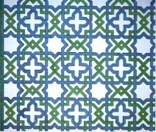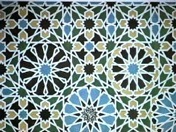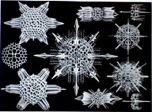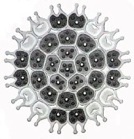Patterns


Patterns



materials needed:
Paper
colored pens, pencils, crayons, paint, etc.
vegetable stamps (raw carrots, potatoes, onions, etc. - these could be carved to produce a design)
other simple stamps


Extensions


Once the children have the basic idea, they can go into quite difficult work. Show them examples of old Spanish tiles. Muslim workers originally created these designs using rulers and pieces of string. Bring in pictures of Moorish buildings, such as the Alhambra in Spain, or the beautifully patterned Islamic mosques.
The teacher could also bring in a collection of beautiful pictures that show detail of historical costumes, heavily embroidered and bejeweled, such as that from the Elizabethan and Baroque periods, or the ornate costumes of Thai or Balinese dancers. Let each child choose a picture and get them to really look at the design and choose one motif to work up into a pattern. This exercise will help them to really look at pictures -- to really look at design. If we do these things, the children really begin to appreciate art.
Nature also incorporates exquisite patterns and designs. The book, Art Forms in Nature, by Ernst Haeckle shows the incredible symmetrical beauty of microscopic life forms as well as corals, jellyfish, shells, fungi and plants. This treasure belongs in every classroom, and can also serve as a wonderful inspiration for pattern and design.



